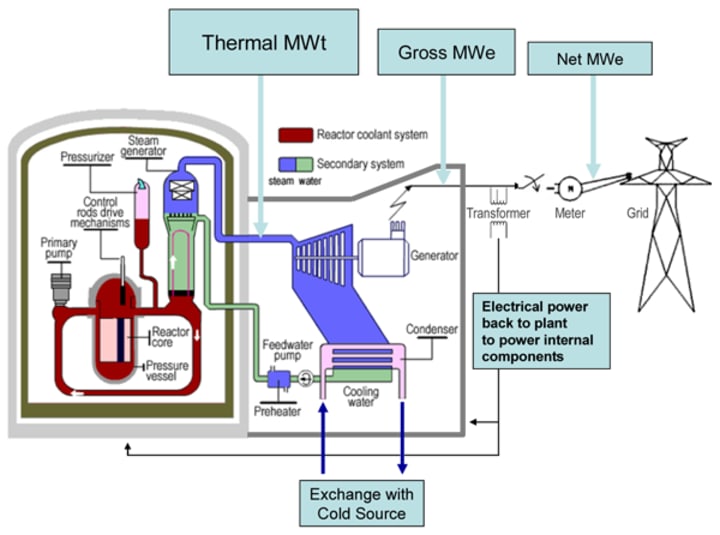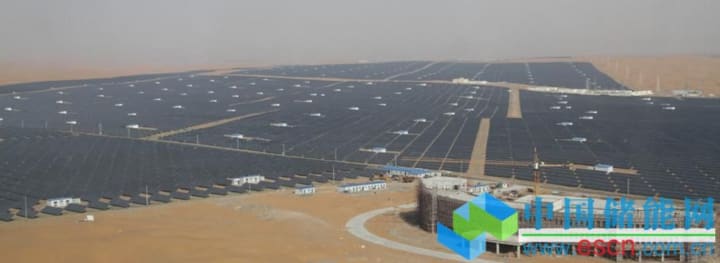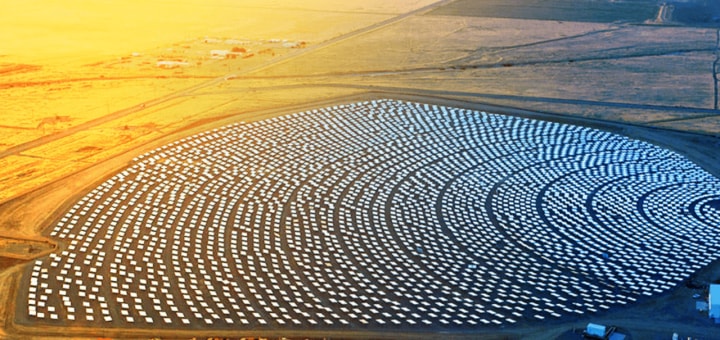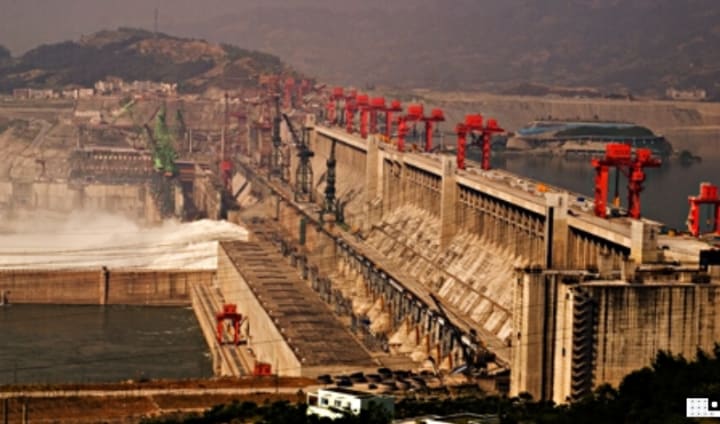Energy - Overview
An overview of commercial forms of power production.

PROLOGUE
Thrice did the Titan Prometheus defy the King of Mt. Olympus. And for that, Zeus, king of the Gods of Mount Olympus, punished him severely.

Over time, humanity learned to harness the powers of fire, wind, and water. Each element provided a source of energy channeled for various uses. We define that in basic terms. Energy is the power we take from something to produce useful work through something else. The power can come from virtually anywhere, namely: a wound spring, the bonds of an atom, fossils, sunlight, wind, or even water. In time In time, humanity can also harness the power of nothing (Standford). For now, however, we will focus upon what already exists.
INTRODUCTION

Our next blog series intends to review familiar sources of energy production on this Earth. We all have an idea about them. They include coal, nuclear, solar, and water, as well as many others. Each form of energy production comes with its advantages and disadvantages. The reasoning for their uses is more practical than you would believe. For now, let's discuss some general information about them.
POWER PRODUCTION SIMILARITIES
The main difference with each form of power is in the driving force of electrical power generation. We take the energy that comes in, convert or refine it, and produce electricity that facilities then distribute to a consumer. The process isn't clean, either. Every form of production produces waste.
Coal Power

A Brief History of Coal Power
Coal, a fossil fuel, is the result of heat and pressure upon dead plants throughout millions of years (Energy.gov). There is evidence of coal use by Cavemen, as well as, Romans alike. However, it wasn't until the late 1800s that society began to use coal for electricity (Energy.gov). Today, the use of this fuel accounts for 38% of the world's electrical generation (World Coal).
How it Works
Coal power plants first pulverize the coal into a fine powder for greater thermal efficiency. The powdery coal then moves into the combustion chamber of a boiler to generate high temperatures. The high temperatures and pressures allow the conversion of water within a Steam Generator into steam (World Coal).
The steam produced is dried and transported into the blades of a turbine generator. The application of steam onto the turbine blades causes it to rotate at high speeds. A generator positioned at the end of the turbine contains wired coils that generate electricity as the turbine rotates. A transmission system picks up the voltage and transmits it to its end-users (World Coal).
Number of Coal Plants
Approximately 78 countries generate electricity through coal (Carbon Brief). These countries operate almost 12,700 coal power plants (Global Coal). Each power plant operates independently of the other. Also, each one generates waste that is hopefully regulated to minimize the impact on the environment.
NUCLEAR POWER
A Brief History

We can say that the science of atomic radiation began in the late 1890s (World Nuclear). We have focused our knowledge since then to harness the power of the atom with greater efficiency. Since 1945, the U.S. Navy changed how the world saw applications in atomic energy through their development of nuclear propulsion and electricity generation applications (World Nuclear).
While I can't say the U.S. Navy led the change in how the world saw nuclear, I can imagine that they did influence commercial atomic power development across the globe.
How Nuclear Power Works

Nuclear power plants initiate and maintain fission within a reactor. The controlled fission reaction heats water to specific temperature ranges through the use of control rods and other digital and mechanical systems. Similar to coal power, the heated water then passes through a Steam Generator that uses the heat transfer to create steam. The steam is dried and transported along to a turbine generator for the production of electrical power. A transmission system transfers the generated electricity from the turbine generator, ultimately to the consumer.

The majority of nuclear power facilities on this planet produce energy through two types of reactors, namely: Pressurized and Boiling Water Reactors(World Nuclear). The fundamental difference between these two is where steam production occurs. Pressurized water reactors operate in the manner we just discussed. In boiling water reactors, however, the steam is produced within the reactor.
Number of Nuclear Power Plants
Building upon the Navy's successes after 1945, commercial power plant development began throughout the U.S. In 2019, approximately 98 nuclear power plants were operating within this country. Across the world, however, there are about 225 operating nuclear reactors. The need for carbon-free atomic power will only increase over time (World Nuclear).
SOLAR POWER

Our society can attribute credit to Alexandre Edmund Becquerel with the first observation of the Photovoltaic Effect (PV) in 1839 (SEIA). I'm not sure this is true, but it's a popular observation, at least. Research into solar power continued since that time.
Energy crises and environmental movements accelerated the development of this technology. Similar to any new technology, the cost of solar power was bearable only for the wealthy. Nowadays, higher efficiencies in technology, along with greater demand, reduced the cost of use to more manageable levels. The price will only lower with research and time. Countries trying to reduce their carbon footprint put solar power at the forefront of their energy portfolios.
How it Works
Multiple technologies exist for the production of electricity through solar power. For now, we'll discuss solar panels and concentrators.
Solar Panels

The PV effect allows for the generation of electric current within a PV cell after exposure to sunlight (Calgary). The use of semiconductors and solar panels allows for the direction of the electricity generated to a useful source. Solar panels installed on homes, for instance, will direct the power for valuable applications like heating and lighting. We further enhance that use by utilizing batteries for storage of that power.
Solar Concentrators

Concentrating solar power farms operate similarly to coal and nuclear power plants, albeit without the coal, nuclear radiation, or radioactive waste (SEIA). The mirrors at this plant concentrate thermal energy used to convert water into steam that drives a turbine generator. The rotation of the turbine generator creates electricity transmitted to consumers.
Number of Solar Plants
In February 2019, there were 2,500 PV generating facilities within the United States (EIA). They are small scale and create anywhere between 1 - 5 megawatts. Larger projects are underway.
There are, however, much more extensive facilities in operation. One example of such a facility is within the Mohammed bin Rashid Al Maktoum Solar Park in the UAE (Power Technology). The project is in multiple phases, with a projected output of 5,000 MW by 2030.
HYDROELECTRIC PLANTS

A Brief History
Humanity utilized the power in water for centuries. Greeks used it to grind seeds (Energy Informative). The industrial revolution utilized the power in water for their textile industries. Water, however, found its genuine potential in power generation following the 1831 presentation of the first electric generator by Michael Faraday. Approximately 50 years later, Appleton, Wisconsin, saw the birth of the world's first hydroelectric power plant.
How It Works
The power facility (i.e., dam, tank, or river, etc.) uses the flow and pressure of water to direct a stream against the blades of a turbine, causing it to spin (Energy.gov). The spinning turbine rotates a generator that produces electrical power. A transmission system transfers the electricity from the generator to the consumer.
Number of Hydro Plants
Around 62,000 hydroelectric power plants are operating across the world (EIA). The capacity of the power plant, like any other power plane, varies depending upon the need for power and the available resources. Some of these power plants can be massive.
ENVIRONMENTAL IMPACTS
We transform the Earth, and our society, as we use and transform energy. During our earlier years, we chose to use that energy with no regard for the consequences of our actions. The skies would darken with coal ash, rivers would burn, and communities would burn for decades. The results of these efforts forced our society to regulate the industrial processes we develop. We were killing our people, and our people cried out for change.
Slowly, but surely, the conditions adversely affecting us slowly started clearing. We barely staved off the disaster we were creating. Our use of energy eventually made us believe that we could never do without it.
And society can't do without it. Imagine how the effect of sustained power losses impacts the community. Nothing would get done. Countries would become paralyzed, especially with our Internet of Everything.
IN CLOSING
Thank you for joining me on this Energy series. Our next article focuses specifically on Coal Energy.
The article was first presented in the Steemit Community under my username Scholaris.






Comments
There are no comments for this story
Be the first to respond and start the conversation.